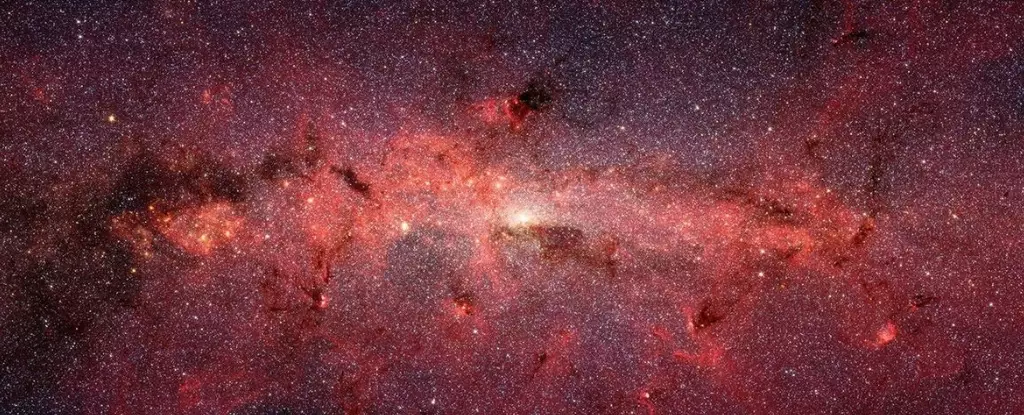The central molecular zone (CMZ) of the Milky Way galaxy is a vibrant, chaotic region that has baffled astronomers for decades. It spans nearly 700 light-years and is home to some of the densest molecular gas found in our galaxy. Not only is the gas here unusually ionized, with a significantly higher rate of electron loss than anticipated, but it also emits a mysterious glow of gamma rays that resonates at an energy level of 511 kilo-electronvolts (keV). The simultaneous occurrence of these phenomena invites us to consider whether they might share a common origin.
Historically, astronomers have struggled to find conclusive explanations for the ionization of the CMZ and the gamma-ray emissions. Conventional sources like cosmic rays and starlight have been pointed to as potential culprits, yet they yield insufficient energy levels to fully explain the observed effects. The enigma intensifies with the gamma radiation, which has eluded definitive sources for decades, leaving options ranging from supernovae to neutron stars unconvincing.
The Dark Matter Hypothesis
In pursuit of answers, the spotlight inevitably turns toward dark matter—a form of matter theorized to compose approximately 85% of the universe. Though invisible and not detectable through conventional means, its effects are observable through gravitational interactions with visible matter. One innovative proposal suggests the existence of light dark matter particles, known as sub-GeV dark matter candidates, with masses significantly lighter than protons.
This raises a crucial question: Could these elusive dark matter particles be the common factor behind both the ionized gas and the gamma-ray emissions? New research posits that interactions between these dark matter particles and their antiparticles in the galactic core may produce electrons and positrons, subsequently causing the observed ionization in the CMZ. If validated, this could establish a transformative link between two fascinating astronomical phenomena.
Simulations and Findings
Recent simulations provide compelling support for this hypothesis. The process of dark matter particle annihilation yields highly energetic electrons and positrons. When these low-energy particles interact with the dense gas in the CMZ, they lose energy efficiently, leading to a rapid ionization of the surrounding hydrogen molecules. This finding aligns closely with the observed ionization rates, suggesting that dark matter could play a role more significant than previously understood.
Interestingly, the formation and annihilation of positrons with electrons would also produce the 511keV gamma rays, connecting the dots between dark matter and two seemingly unrelated phenomena. The efficiency of positron interactions will dictate the intensity of gamma-ray emissions, meaning that while the dark matter model accounts for ionization rates, it might also shed light upon the mysterious gamma rays.
Implications for Future Research
Exploring the ramifications of these findings opens new avenues for research into dark matter. Scientists now possess a method to investigate light dark matter beyond traditional laboratory experiments, which struggle to detect such subtleties. Observations within the CMZ are not only revealing patterns that align with dark matter predictions but are also generating data that may confirm or challenge existing models.
Continuing studies of both the ionization profile and the gamma-ray emissions will be essential for refining our understanding of dark matter’s nature. Future telescopes with enhanced resolution could offer unprecedented insights into the spatial distribution of dark matter around the CMZ, illuminating how these particles interact in the galaxy’s core.
Concluding Observations: The Galaxy’s Hidden Treasures
The ongoing exploration of the CMZ serves as a thrilling reminder that our understanding of the universe remains incomplete. Each piece of the puzzle offers a glimpse into grander cosmic tales, hinting at the interplay of matter and energy that constitutes our universe. Dark matter’s subtle presence may hold the keys to unlocking one of the universe’s greatest mysteries, compelling scientists to press onward in their quest to understand not only the treasures buried within our galaxy, but also what lies beyond the observable cosmos. The inquiry into these intricacies exemplifies humanity’s enduring curiosity—a pursuit that continues to unveil the unknown, layer by exciting layer.

